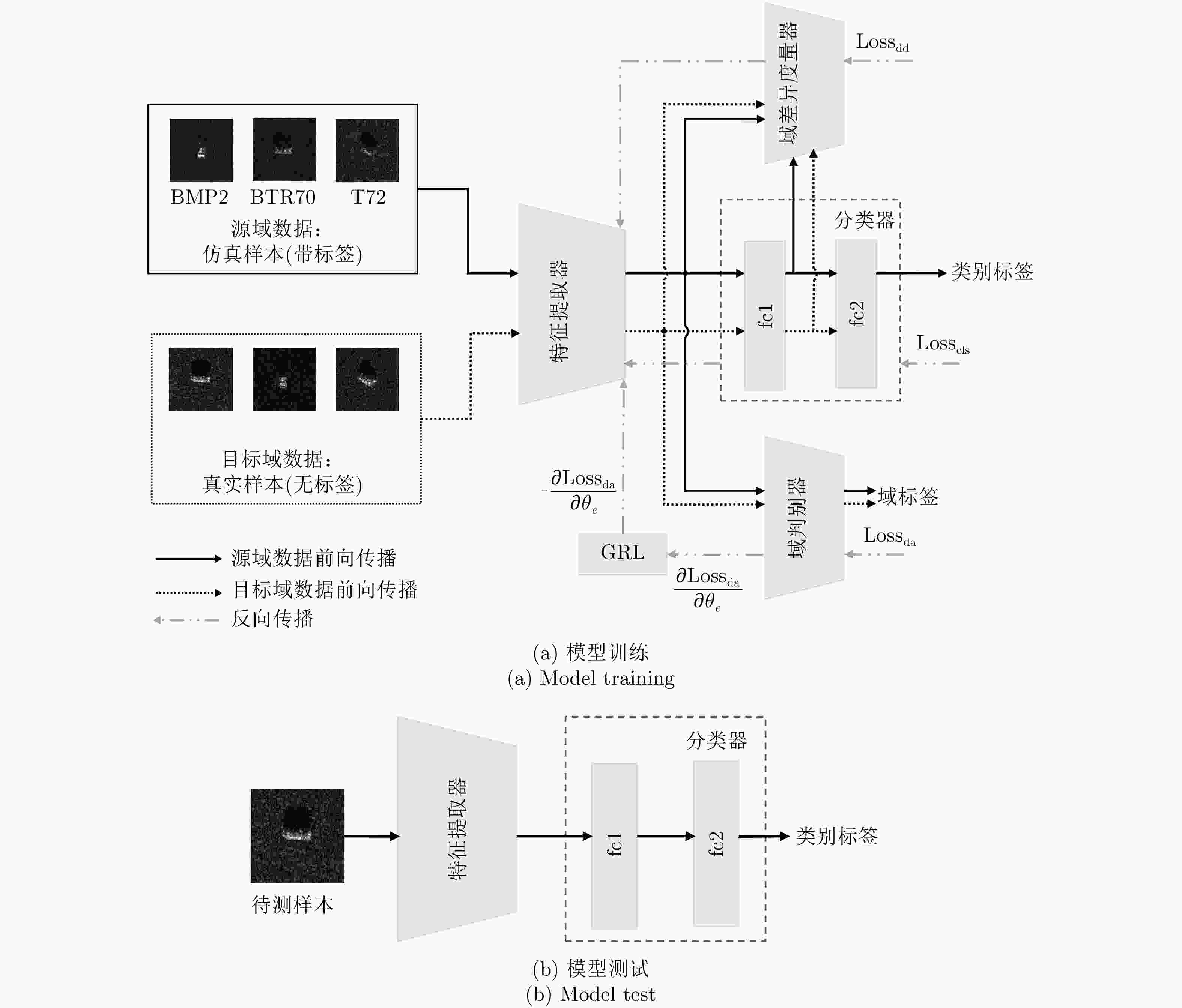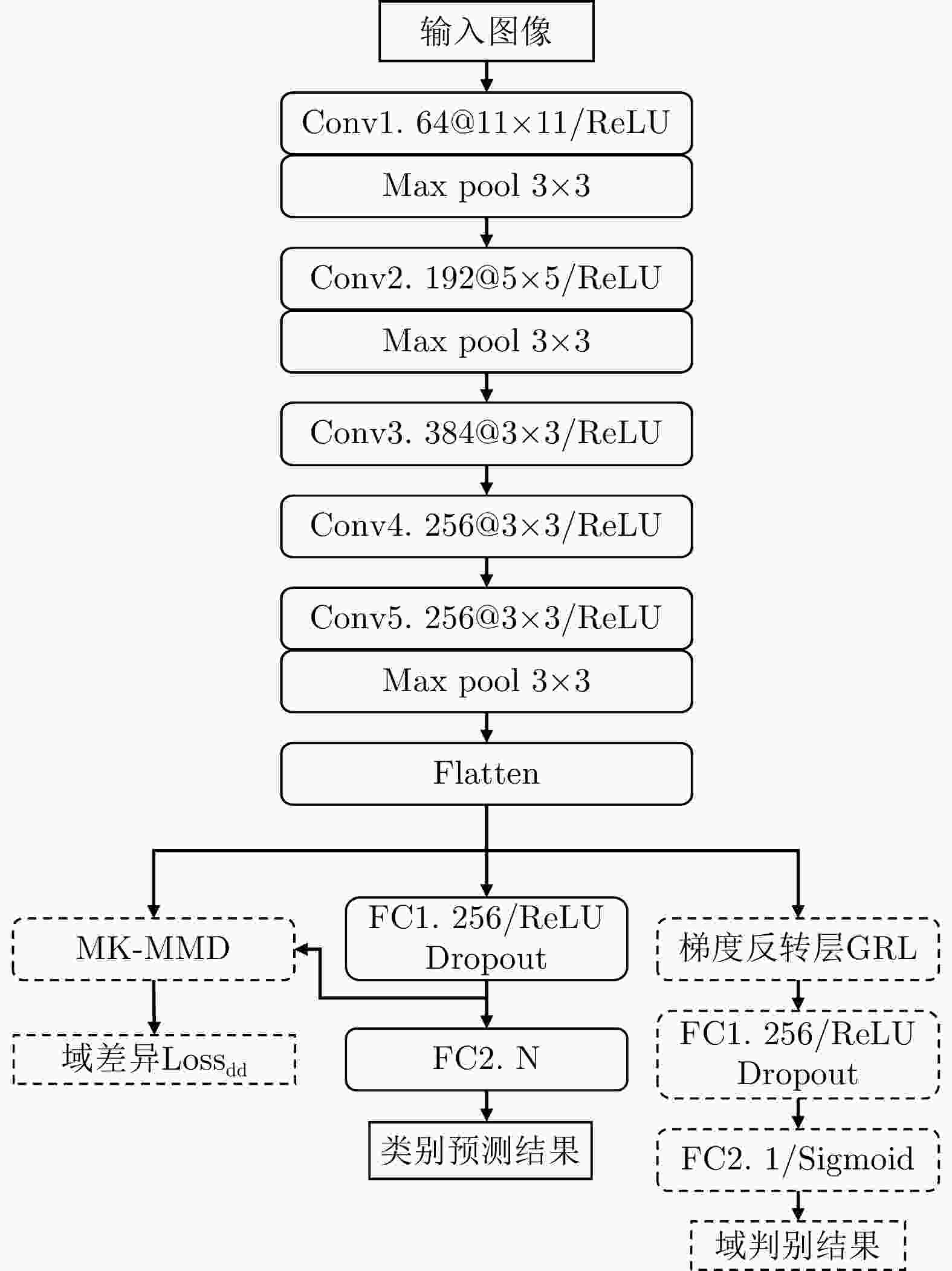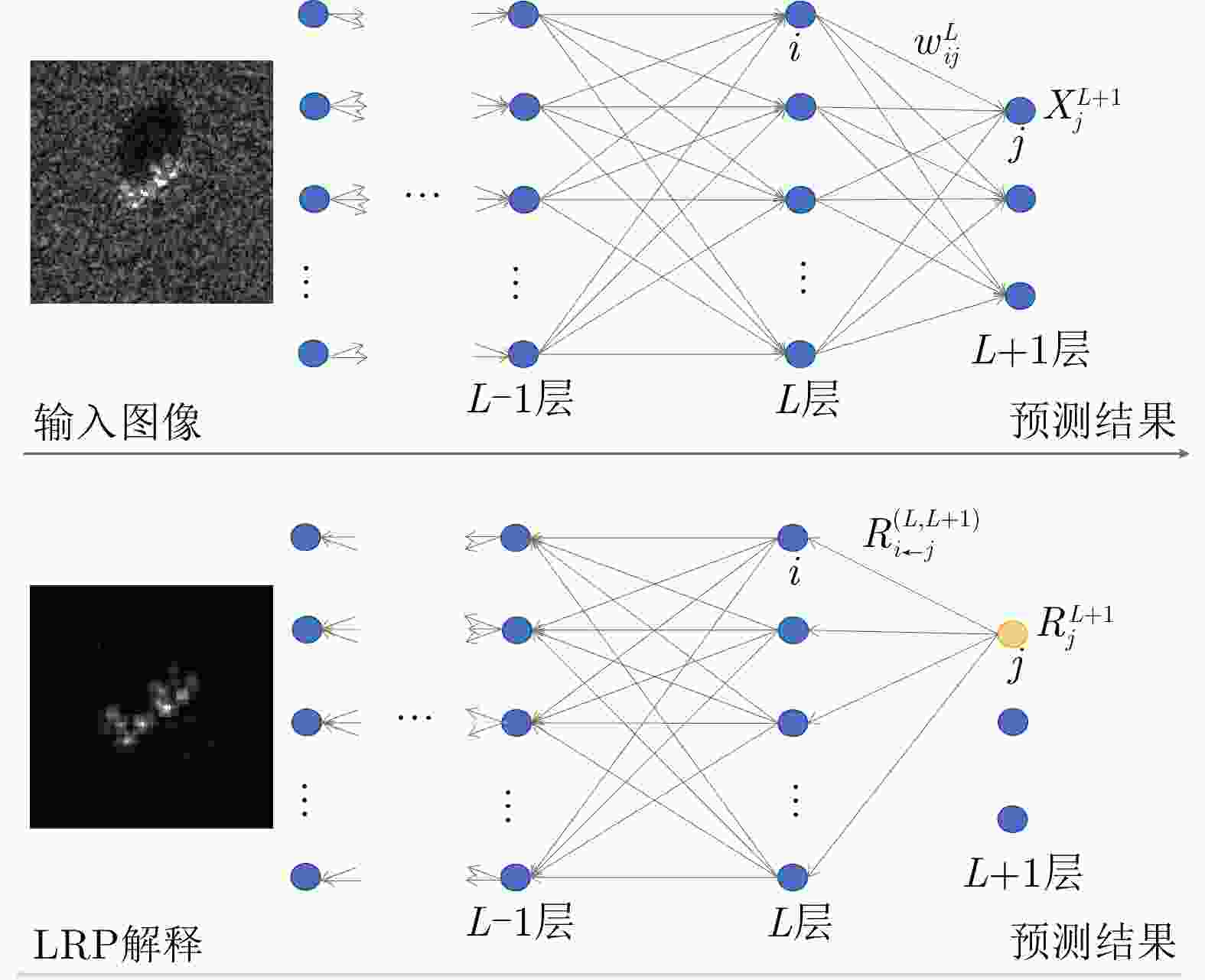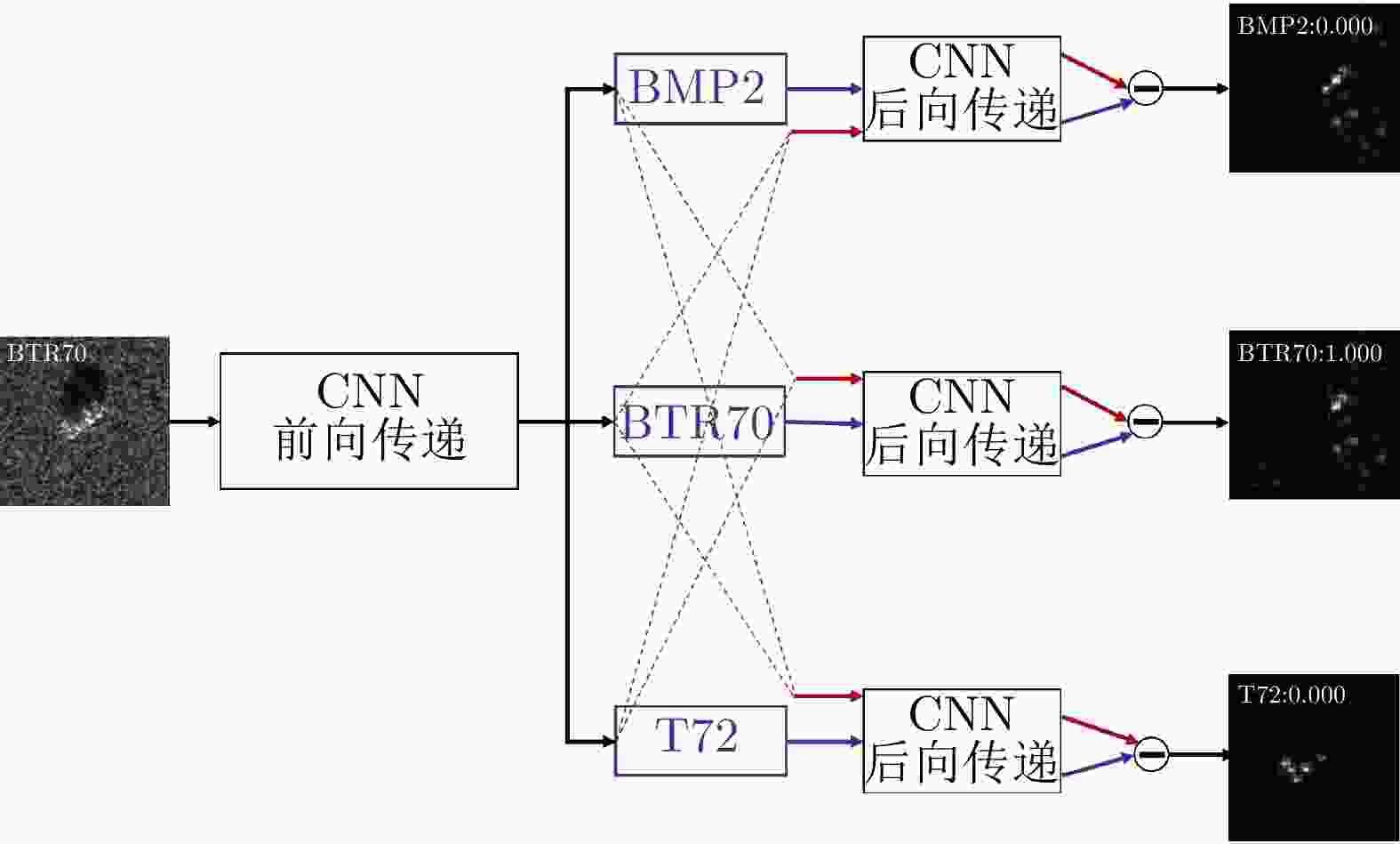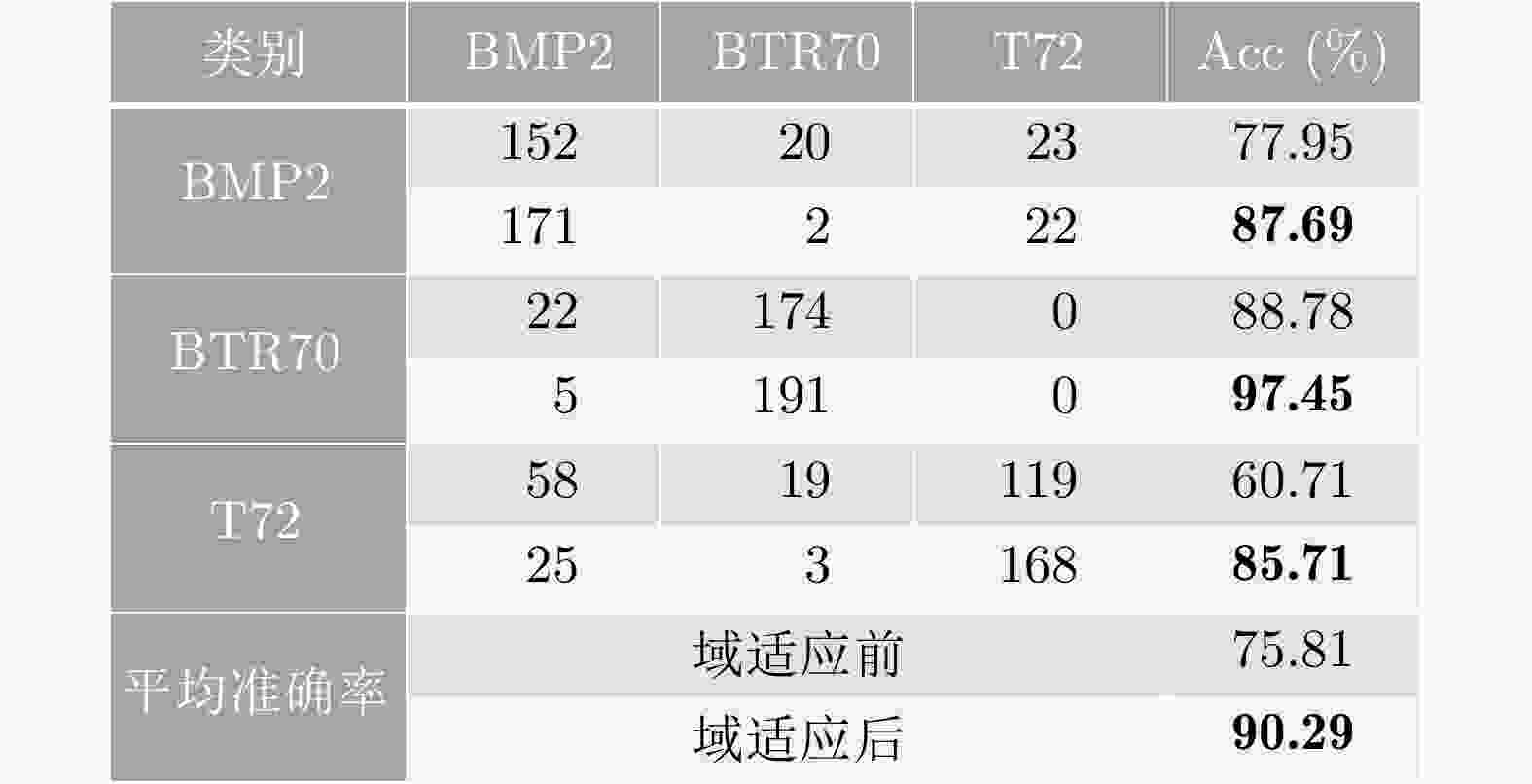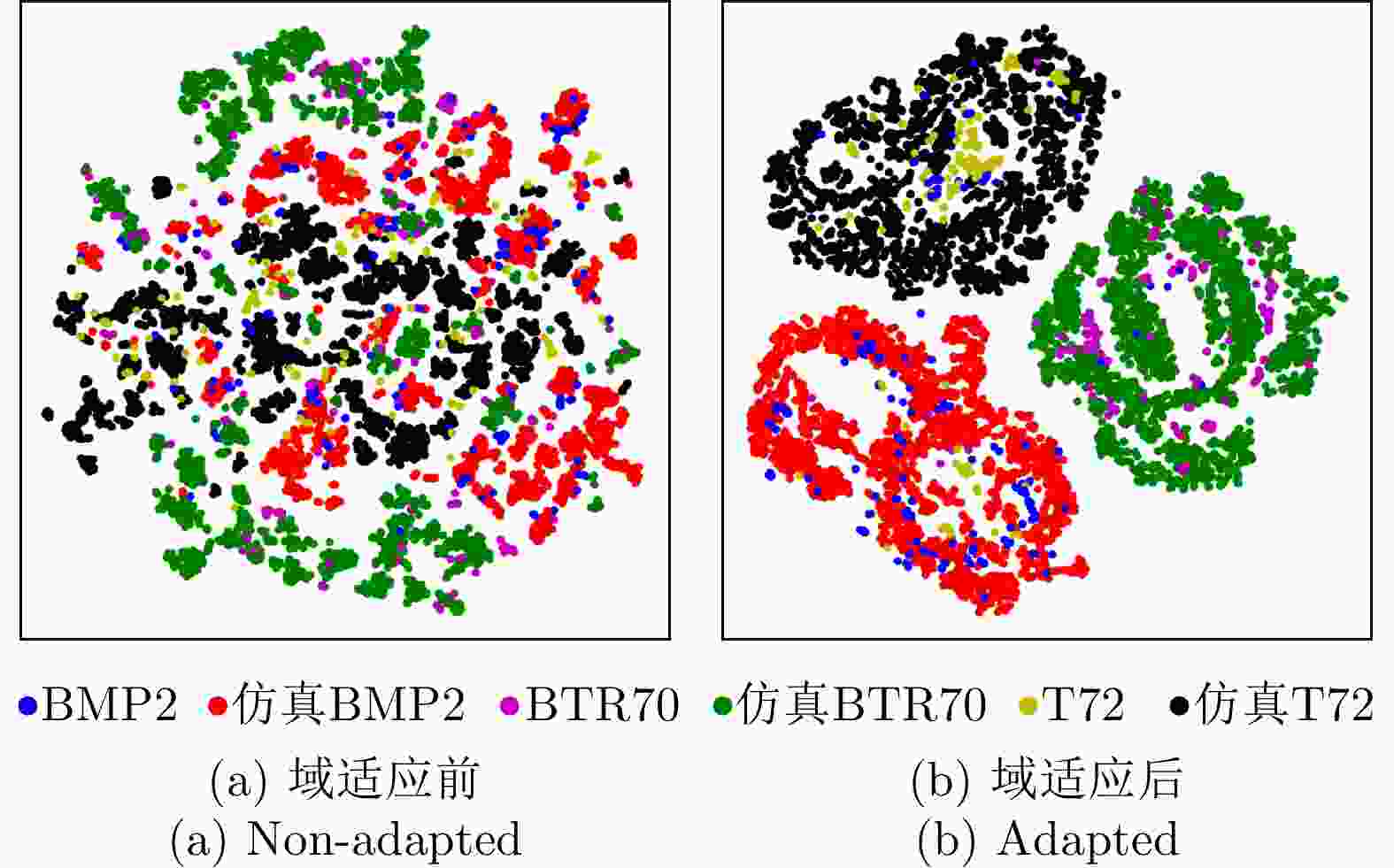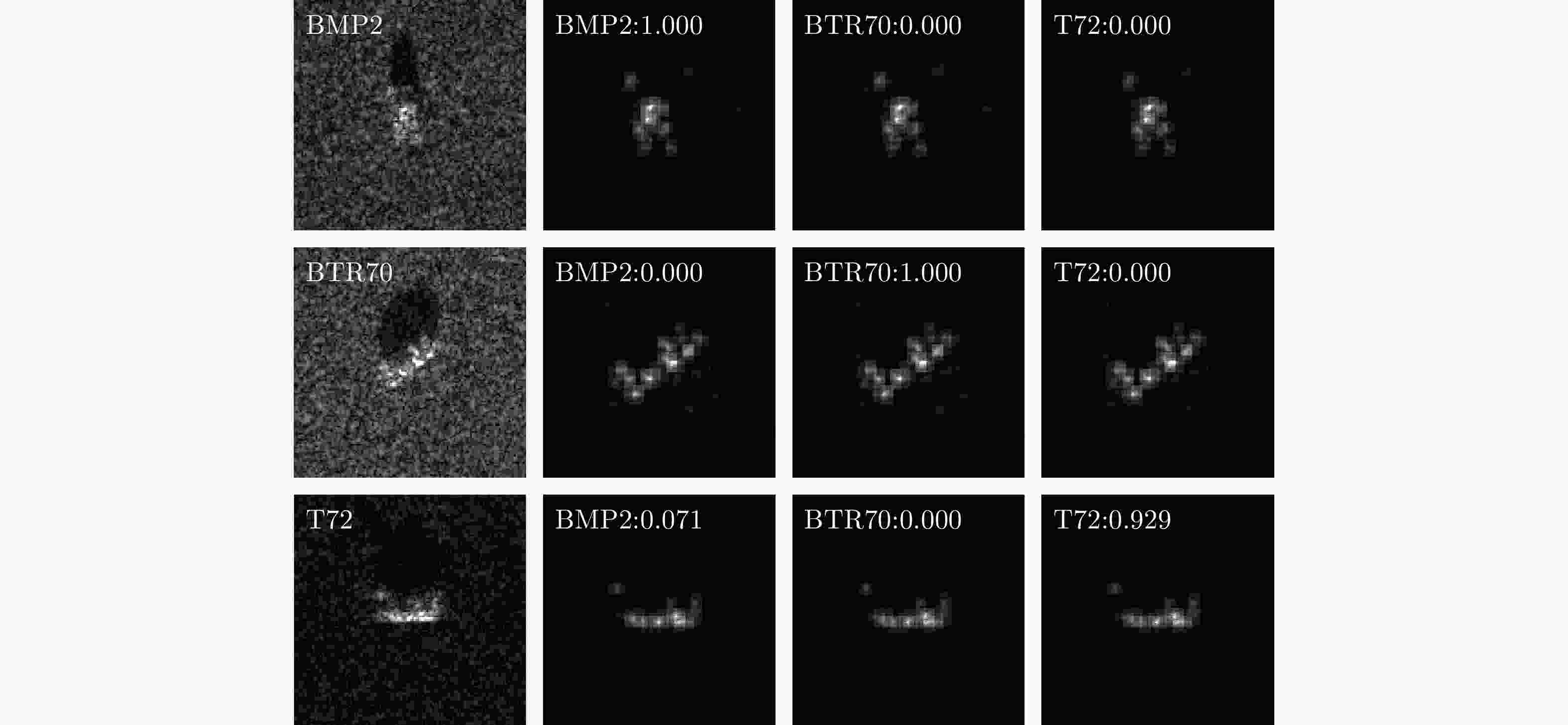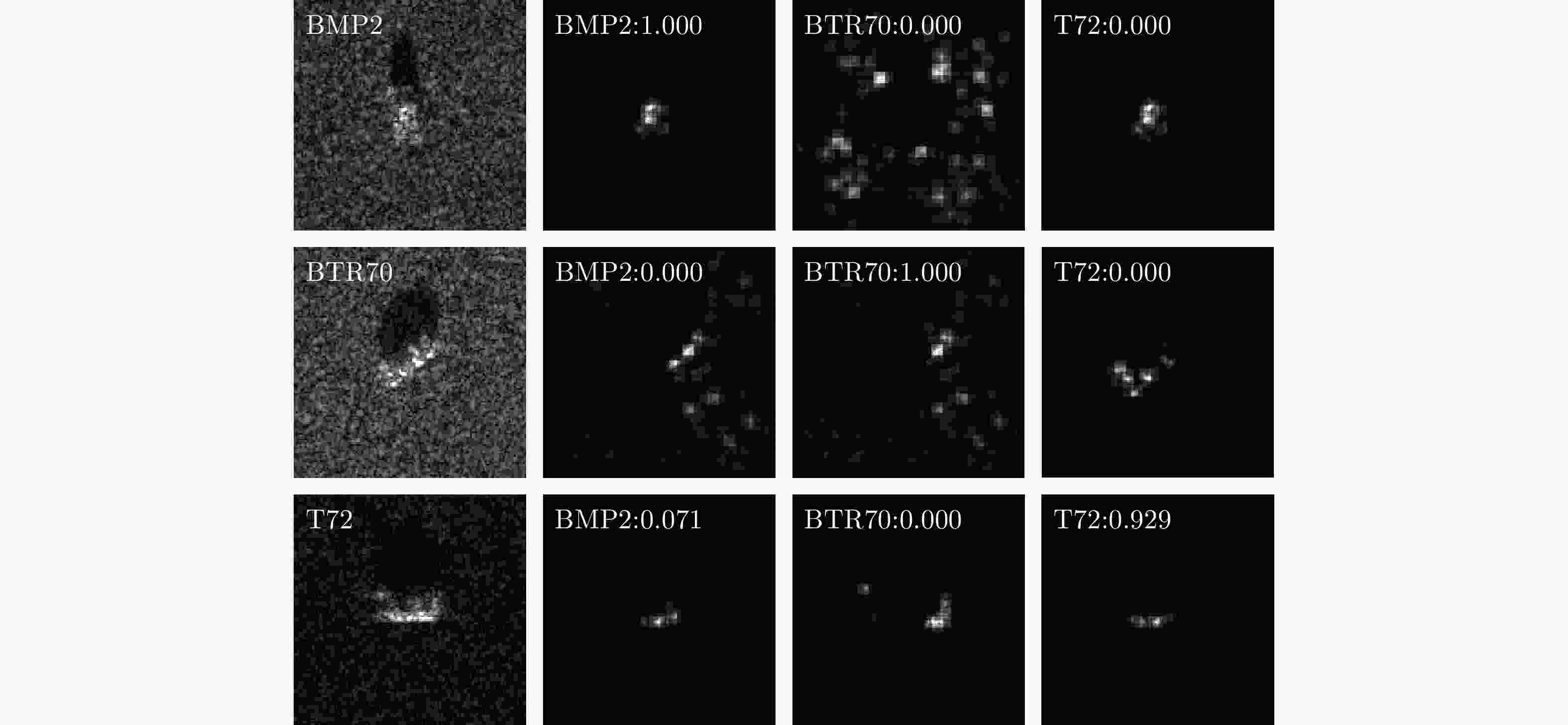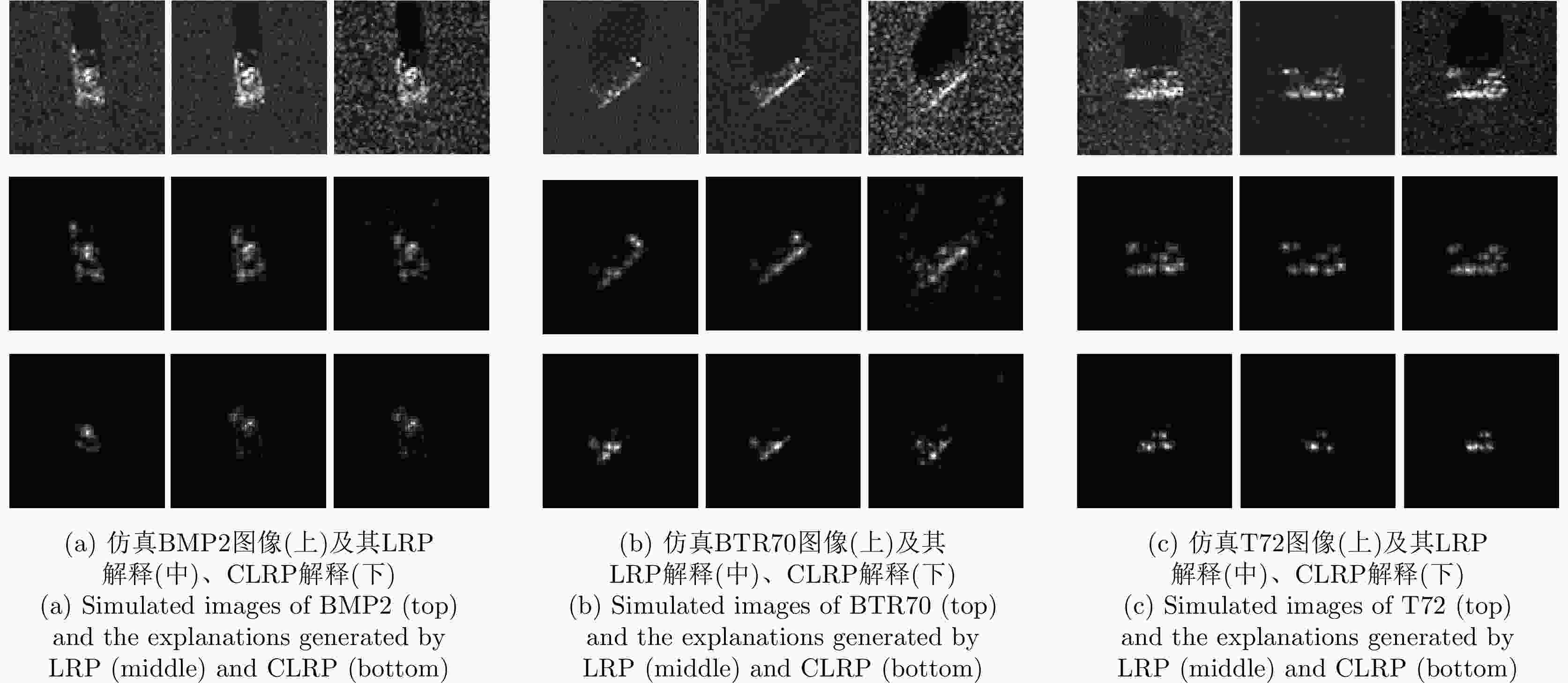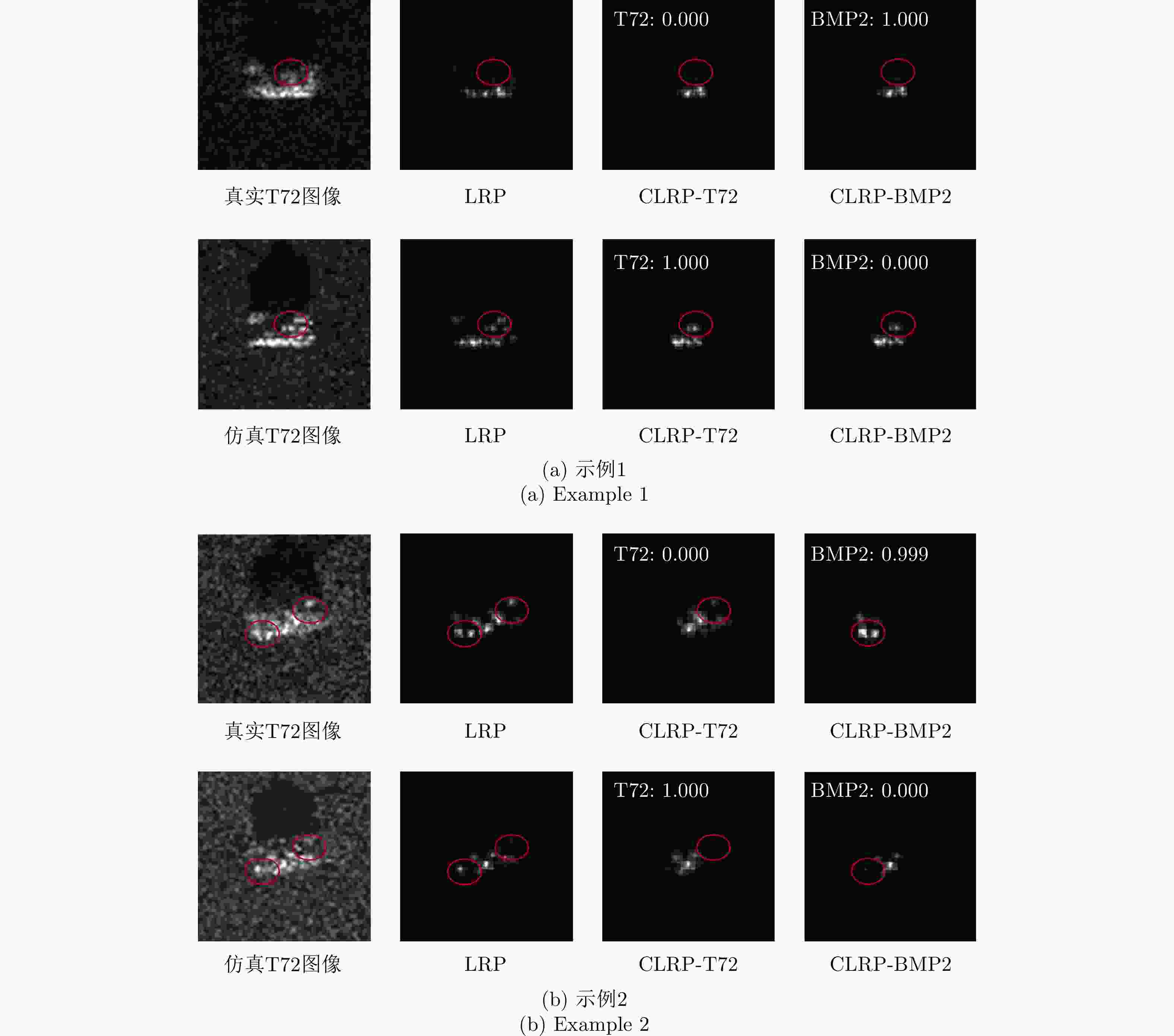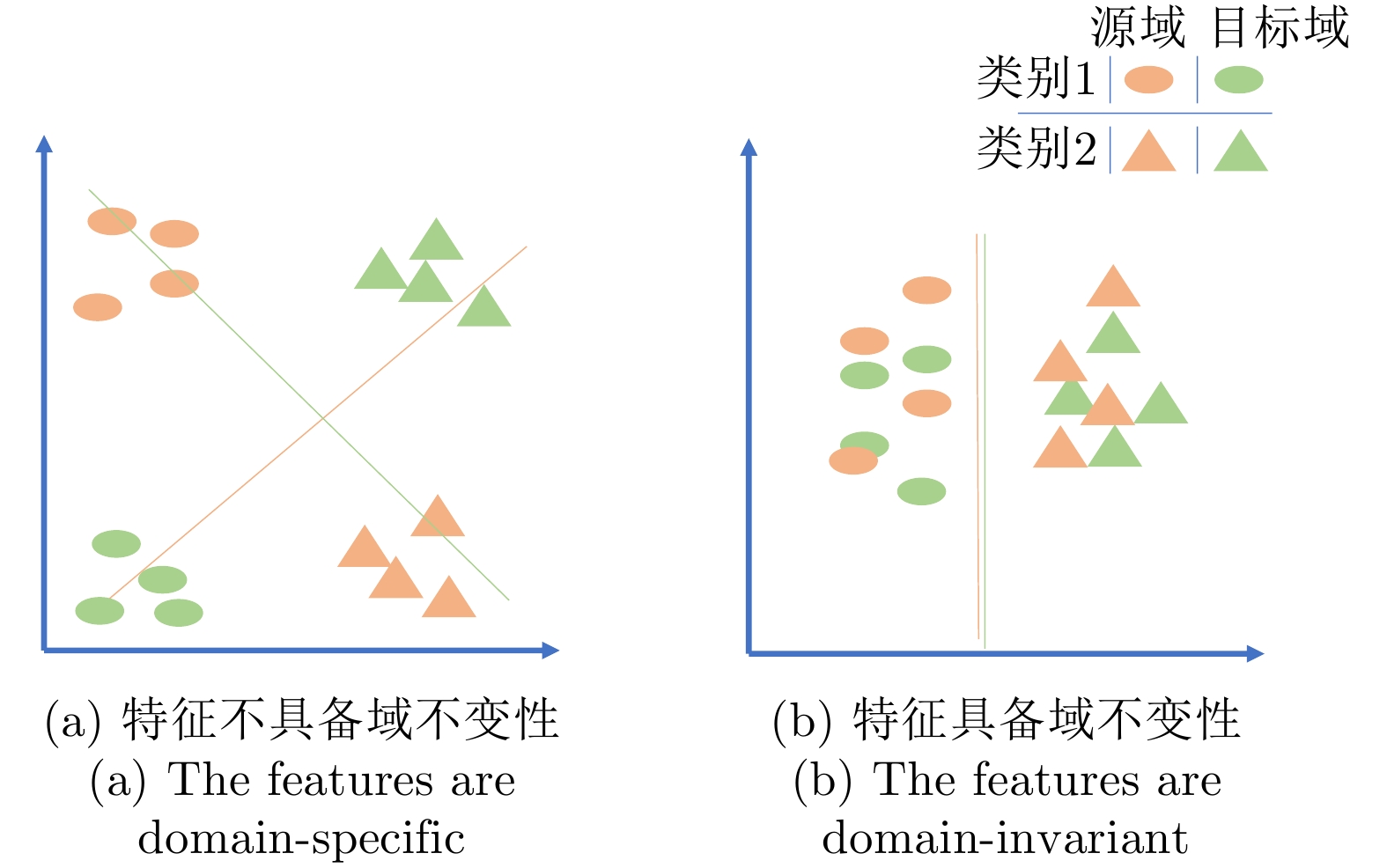Simulation-assisted SAR Target Classification Based on Unsupervised Domain Adaptation and Model Interpretability Analysis
-
摘要: 卷积神经网络(CNN)在光学图像分类领域中得到广泛应用,然而,合成孔径雷达(SAR)图像样本标注难度大、成本高,难以获取满足CNN训练所需的样本数量。随着SAR仿真技术的发展,生成大量带标签的仿真SAR图像并不困难。然而仿真SAR图像样本与真实样本间难免存在差异,往往难以直接支撑实际样本的分类任务。为此,该文提出了一种基于无监督域适应的仿真辅助SAR目标分类方法,集成了多核最大均值差异(MK-MMD)和域对抗训练,以解决由仿真图像分类任务迁移到真实图像分类任务中的域偏移问题。进一步使用逐层相关性传播(LRP)和对比逐层相关性传播(CLRP)两种可解释性方法,对域适应前后的模型进行了解释分析。实验结果表明,该文方法通过修正模型对输入数据的关注区域,找到了域不变的分类特征,显著提升了模型在真实SAR数据上的分类准确率。
-
关键词:
- 合成孔径雷达(SAR) /
- 目标分类 /
- 卷积神经网络(CNN) /
- 无监督域适应 /
- 可解释性
Abstract: Convolutional Neural Networks (CNNs) are widely used in optical image classification. In the case of Synthetic Aperture Radar (SAR) images, obtaining sufficient training examples for CNNs is challenging due to the difficulties in and high cost of data annotation. Meanwhile, with the advancement of SAR image simulation technology, generating a large number of simulated SAR images with annotation is not difficult. However, due to the inevitable difference between simulated and real SAR images, it is frequently difficult to directly support the real SAR image classification. As a result, this study proposes a simulation-assisted SAR target classification method based on unsupervised domain adaptation. The proposed method integrates Multi-Kernel Maximum Mean Distance (MK-MMD) with domain adversarial training to address the domain shift problem encountered during task transition from simulated to real-world SAR image classification. Furthermore, Layer-wise Relevance Propagation (LRP) and Contrastive Layer-wise Relevance Propagation (CLRP) are utilized to explore how the proposed method influences the model decision. The experimental results show that by modifying the focus areas of the model to obtain domain-invariant features for classification, the proposed method can significantly improve classification accuracy. -
表 1 数据集
Table 1. Dataset
数据集 目标类别 俯仰角 数量 源域(仿真)训练集 BMP2 17°, 15° 3462 BTR70 17°, 15° 3462 T72 17°, 15° 3462 源域(仿真)测试集 BMP2 17°, 15° 864 BTR70 17°, 15° 864 T72 17°, 15° 864 目标域(真实)训练集 BMP2 17° 233 BTR70 17° 233 T72 17° 233 目标域(真实)测试集
(SOC和EOC)BMP2 15°, 17° 1052 BTR70 15° 196 T72 15°, 17°, 30° 5906 表 2 SOC数据集
Table 2. SOC dataset
目标类别 目标型号 训练集 测试集 俯仰角 数量 俯仰角 数量 BMP2 9563 17° 233 15° 195 BTR70 C71 17° 233 15° 196 T72 132 17° 233 15° 196 表 3 EOC-1测试集(大俯仰角)
Table 3. EOC-1 test set (large depression variation)
目标类别 目标型号 俯仰角 数量 T72 A64 30° 288 表 4 EOC-2测试集(配置变化)
Table 4. EOC-2 test set (configuration variant)
目标类别 目标型号 俯仰角 数量 T72 S7 15°, 17° 419 A32 15°, 17° 572 A62 15°, 17° 573 A63 15°, 17° 573 A64 15°, 17° 573 表 5 EOC-3测试集(版本变化)
Table 5. EOC-3 test set (version variant)
目标类别 目标型号 俯仰角 数量 BMP2 9566 15°, 17° 428 C21 15°, 17° 429 812 15°, 17° 426 A04 15°, 17° 573 T72 A05 15°, 17° 573 A07 15°, 17° 573 A10 15°, 17° 567 表 6 网络训练过程中参数设置
Table 6. Parameters for the model training procedure
名称 参数值 batch size 32 优化器 SGD 初始学习率${\text{l}}{{\text{r}}_{\text{0}}}$ 0.01 GRL参数$\lambda $ 1 惩罚因子$\gamma $ 1 epoch 500 iteration/epoch 35 表 7 结合不同背景仿真SAR图像的消融实验结果
Table 7. Results of ablation experiments with simulation SAR images of different backgrounds
仿真背景 方法 准确率(%) MK-MMD 域对抗训练 ① × × 28.00±1.39 × √ 47.53±1.39 √ × 35.48±0.52 √ √ 43.44±2.22 ② × × 73.20±1.38 × √ 77.40±2.18 √ × 85.20±1.19 √ √ 87.03±1.29 ③ × × 65.07±0.52 × √ 65.19±2.89 √ × 73.57±0.62 √ √ 77.29±1.58 全部应用 × × 74.79±1.35 × √ 83.99±1.19 √ × 85.85±2.33 √ √ 90.43±0.95 表 8 使用不同仿真背景数据时,各方法在SOC测试集上的分类准确率对比
Table 8. Comparison of the classification accuracy on the SOC test set when using different methods with simulated data under different backgrounds
-
[1] EL-DARYMLI K, MCGUIRE P, POWER D, et al. Target detection in synthetic aperture radar imagery: A state-of-the-art survey[J]. Journal of Applied Remote Sensing, 2013, 7(1): 071598. doi: 10.1117/1.JRS.7.071598 [2] CHEN Sizhe, WANG Haipeng, XU Feng, et al. Target classification using the deep convolutional networks for SAR images[J]. IEEE Transactions on Geoscience and Remote Sensing, 2016, 54(8): 4806–4817. doi: 10.1109/TGRS.2016.2551720 [3] ZHANG Zhimian, WANG Haipeng, XU Feng, et al. Complex-valued convolutional neural network and its application in polarimetric SAR image classification[J]. IEEE Transactions on Geoscience and Remote Sensing, 2017, 55(12): 7177–7188. doi: 10.1109/TGRS.2017.2743222 [4] PAN Zongxu, BAO Xianjie, ZHANG Yueting, et al. Siamese network based metric learning for SAR target classification[C]. IGARSS 2019 – 2019 IEEE International Geoscience and Remote Sensing Symposium, Yokohama, Japan, 2019: 1342–1345. [5] 董纯柱, 胡利平, 朱国庆, 等. 地面车辆目标高质量SAR图像快速仿真方法[J]. 雷达学报, 2015, 4(3): 351–360. doi: 10.12000/JR15057DONG Chunzhu, HU Liping, ZHU Guoqing, et al. Efficient simulation method for high quality SAR images of complex ground vehicles[J]. Journal of Radars, 2015, 4(3): 351–360. doi: 10.12000/JR15057 [6] SONG Qian, CHEN Hui, XU Feng, et al. EM simulation-aided zero-shot learning for SAR automatic target recognition[J]. IEEE Geoscience and Remote Sensing Letters, 2020, 17(6): 1092–1096. doi: 10.1109/LGRS.2019.2936897 [7] 胡利平, 董纯柱, 刘锦帆, 等. 基于SAR仿真图像的地面车辆非同源目标识别[J]. 系统工程与电子技术, 2021, 43(12): 3518–3525. doi: 10.12305/j.issn.1001-506X.2021.12.13HU Liping, DONG Chunzhu, LIU Jinfan, et al. Non-homologous target recognition of ground vehicles based on SAR simulation image[J]. Systems Engineering and Electronics, 2021, 43(12): 3518–3525. doi: 10.12305/j.issn.1001-506X.2021.12.13 [8] MALMGREN-HANSEN D, KUSK A, DALL J, et al. Improving SAR automatic target recognition models with transfer learning from simulated data[J]. IEEE Geoscience and Remote Sensing Letters, 2017, 14(9): 1484–1488. doi: 10.1109/LGRS.2017.2717486 [9] ZHANG Linbin, LENG Xiangguang, FENG Sijia, et al. Domain knowledge powered two-stream deep network for few-shot SAR vehicle recognition[J]. IEEE Transactions on Geoscience and Remote Sensing, 2022, 60: 1–15. doi: 10.1109/TGRS.2021.3116349 [10] 范苍宁, 刘鹏, 肖婷, 等. 深度域适应综述: 一般情况与复杂情况[J]. 自动化学报, 2021, 47(3): 515–548. doi: 10.16383/j.aas.c200238FAN Cangning, LIU Peng, XIAO Ting, et al. A review of deep domain adaptation: General situation and complex situation[J]. Acta Automatica Sinica, 2021, 47(3): 515–548. doi: 10.16383/j.aas.c200238 [11] TZENG E, HOFFMAN J, ZHANG Ning, et al. Deep domain confusion: Maximizing for domain invariance[EB/OL]. https://arxiv.org/abs/1412.3474v1, 2014. [12] LONG Mingsheng, CAO Yue, WANG Jianmin, et al. Learning transferable features with deep adaptation networks[C]. The 32nd International Conference on International Conference on Machine Learning, Lille, France, 2015: 97–105. [13] LONG Mingsheng, ZHU Han, WANG Jianmin, et al. Deep transfer learning with joint adaptation networks[C]. The 34th International Conference on Machine Learning, Sydney, Australia, 2017: 2208–2217. [14] ZHU Yongchun, ZHUANG Fuzhen, WANG Jindong, et al. Deep subdomain adaptation network for image classification[J]. IEEE Transactions on Neural Networks and Learning Systems, 2021, 32(4): 1713–1722. doi: 10.1109/TNNLS.2020.2988928 [15] GANIN Y, USTINOVA E, AJAKAN H, et al. Domain-adversarial training of neural networks[J]. The Journal of Machine Learning Research, 2016, 17(1): 2096–2030. [16] SAITO K, WATANABE K, USHIKU Y, et al. Maximum classifier discrepancy for unsupervised domain adaptation[C]. 2018 IEEE/CVF Conference on Computer Vision and Pattern Recognition, Salt Lake City, USA, 2018: 3723–3732. [17] PEI Zhongyi, CAO Zhangjie, LONG Mingsheng, et al. Multi-adversarial domain adaptation[C]. The 32nd AAAI Conference on Artificial Intelligence, New Orleans, USA, 2018: 3934–3941. [18] DU Zhekai, LI Jingjing, SU Hongzu, et al. Cross-domain gradient discrepancy minimization for unsupervised domain adaptation[C]. 2021 IEEE/CVF Conference on Computer Vision and Pattern Recognition (CVPR), Nashville, USA, 2021: 3936–3945. [19] LONG Mingsheng, CAO Zhangjie, WANG Jianmin, et al. Conditional adversarial domain adaptation[C]. Neural Information Processing Systems, Montréal, Canada, 2018: 1647–1657. [20] GHIFARY M, KLEIJN W B, ZHANG Mengjie, et al. Deep reconstruction-classification networks for unsupervised domain adaptation[C]. The 14th European Conference on Computer Vision, Amsterdam, The Netherlands, 2016: 597–613. [21] BOUSMALIS K, TRIGEORGIS G, SILBERMAN N, et al. Domain separation networks[C]. The 30th International Conference on Neural Information Processing Systems, Barcelona, Spain, 2016: 343–351. [22] SANKARANARAYANAN S, BALAJI Y, CASTILLO C D, et al. Generate to adapt: Aligning domains using generative adversarial networks[C]. 2018 IEEE/CVF Conference on Computer Vision and Pattern Recognition, Salt Lake City, USA, 2018: 8503–8512. [23] HUANG Zhongling, PAN Zongxu, and LEI Bin. What, where, and how to transfer in SAR target recognition based on deep CNNs[J]. IEEE Transactions on Geoscience and Remote Sensing, 2020, 58(4): 2324–2336. doi: 10.1109/TGRS.2019.2947634 [24] WANG Ke, ZHANG Gong, and LEUNG H. SAR target recognition based on cross-domain and cross-task transfer learning[J]. IEEE Access, 2019, 7: 153391–153399. doi: 10.1109/ACCESS.2019.2948618 [25] ZHANG Wei, ZHU Yongfeng, and FU Qiang. Adversarial deep domain adaptation for multi-band SAR images classification[J]. IEEE Access, 2019, 7: 78571–78583. doi: 10.1109/ACCESS.2019.2922844 [26] XU Yongjie, LANG Haitao, NIU Lihui, et al. Discriminative adaptation regularization framework-based transfer learning for ship classification in SAR images[J]. IEEE Geoscience and Remote Sensing Letters, 2019, 16(11): 1786–1790. doi: 10.1109/LGRS.2019.2907139 [27] BACH S, BINDER A, MONTAVON G, et al. On pixel-wise explanations for non-linear classifier decisions by layer-wise relevance propagation[J]. PLoS One, 2015, 10(7): e0130140. doi: 10.1371/journal.pone.0130140 [28] GU Jindong, YANG Yinchong, and TRESP V. Understanding individual decisions of CNNs via contrastive backpropagation[C]. The 14th Asian Conference on Computer Vision, Perth, Australia, 2018: 119–134. [29] GRETTON A, SRIPERUMBUDUR B, SEJDINOVIC D, et al. Optimal kernel choice for large-scale two-sample tests[C]. The 25th International Conference on Neural Information Processing Systems, Lake Tahoe, USA, 2012: 1205–1213. [30] KRIZHEVSKY A, SUTSKEVER I, and HINTON G E. ImageNet classification with deep convolutional neural networks[C]. The 25th International Conference on Neural Information Processing Systems, Lake Tahoe, USA, 2012: 1097–1105. [31] GOODFELLOW I J, POUGET-ABADIE J, MIRZA M, et al. Generative adversarial nets[C]. The 27th International Conference on Neural Information Processing Systems, Montreal, Canada, 2014: 2672–2680. [32] CHOI J, JEONG M, KIM T, et al. Pseudo-labeling curriculum for unsupervised domain adaptation[C]. The 30th British Machine Vision Conference, Cardiff, UK, 2019: 67. [33] SHU Yang, CAO Zhangjie, LONG Mingsheng, et al. Transferable curriculum for weakly-supervised domain adaptation[C]. The 33rd AAAI Conference on Artificial Intelligence, Hawaii, USA, 2019: 4951–4958. [34] SELVARAJU R R, COGSWELL M, DAS A, et al. Grad-CAM: Visual explanations from deep networks via gradient-based localization[C]. 2017 IEEE International Conference on Computer Vision (ICCV), Venice, Italy, 2017: 618–626. [35] ZEILER M D and FERGUS R. Visualizing and understanding convolutional networks[C]. The 13th European Conference on Computer Vision, Zurich, Switzerland, 2014: 818–833. [36] MONTAVON G, LAPUSCHKIN S, BINDER A, et al. Explaining nonlinear classification decisions with deep taylor decomposition[J]. Pattern Recognition, 2017, 65: 211–222. doi: 10.1016/j.patcog.2016.11.008 [37] VAN DER MAATEN L and HINTON G. Visualizing data using t-SNE[J]. Journal of Machine Learning Research, 2008, 9(86): 2579–2605. -



 作者中心
作者中心 专家审稿
专家审稿 责编办公
责编办公 编辑办公
编辑办公
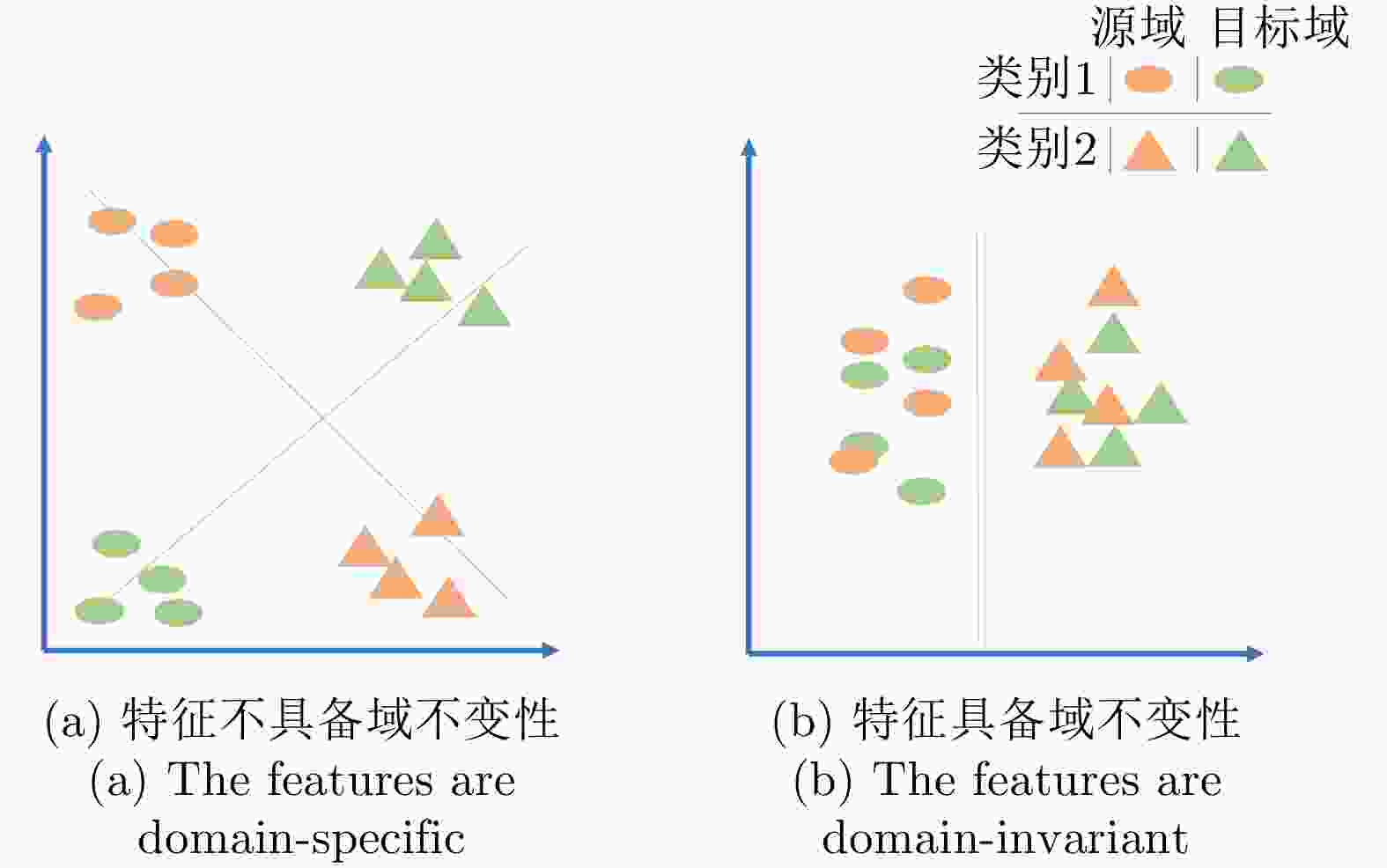
 下载:
下载:
